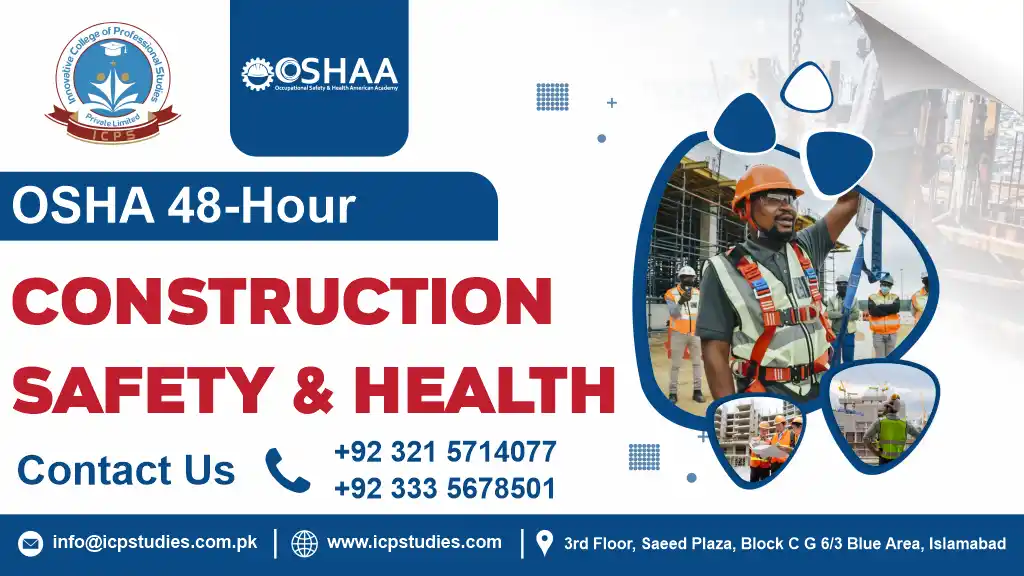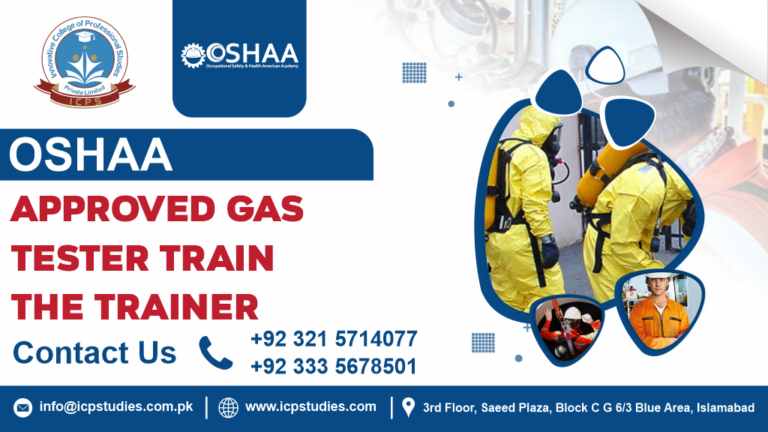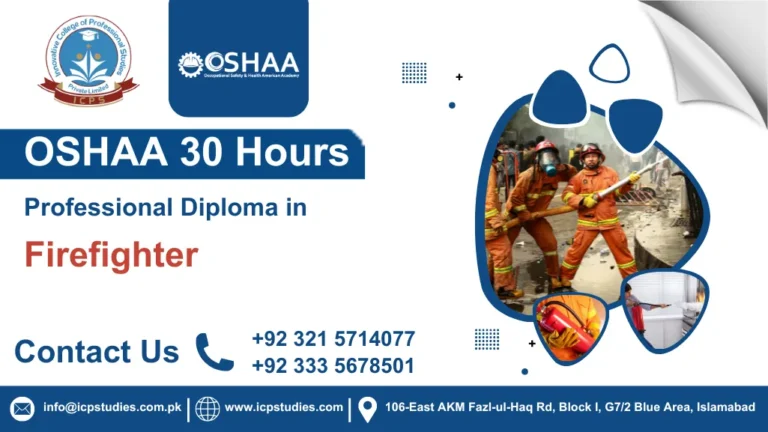In the ever-evolving landscape of construction, safety remains paramount. As projects grow in complexity and scale, so too does the need for comprehensive safety training. Enter the OSHA 48-Hour Construction Safety and Health course—a robust program designed to arm construction professionals with in-depth knowledge and practical skills to manage and enhance safety on job sites.
The OSHA 48-Hour Construction Safety and Health course is an extensive training program developed by the Occupational Safety and Health Administration (OSHA). It extends beyond the foundational knowledge offered in shorter courses by diving deeply into both standard and advanced safety practices, regulations, and strategies specific to the construction industry. This course is intended for individuals who are seeking a thorough understanding of construction safety management and compliance.
The OSHA 48-Hour Construction Safety and Health course is more than just a training program; it’s a commitment to achieving excellence in construction safety. By providing an in-depth look at OSHA regulations and advanced safety practices, this course prepares construction professionals to tackle complex safety challenges, ensure regulatory compliance, and foster a culture of safety on job sites. Whether you’re a manager, safety officer, or experienced worker looking to advance your career, the OSHA 48-Hour course offers the knowledge and tools needed to enhance safety and drive success in the construction industry.
All About OSHA 48-Hour Construction Safety and Health
Course Overview
The OSHA 48-Hour Construction Safety and Health course is an advanced, in-depth training program designed to provide comprehensive knowledge and skills related to construction safety and health. Developed by the Occupational Safety and Health Administration (OSHA), this course is tailored for construction professionals who require a deeper understanding of safety regulations and management practices beyond the basic level offered by shorter courses.
The OSHA 48-Hour Construction Safety and Health course is a comprehensive training program designed to equip construction professionals with advanced safety knowledge and skills. By covering a wide range of safety topics and OSHA regulations in detail, this course helps participants enhance their safety management practices, ensure regulatory compliance, and contribute to safer construction environments. Whether you’re a supervisor, safety professional, or experienced worker, the OSHA 48-Hour course offers valuable insights and practical tools to elevate your safety practices and career.
Study Units
- Introduction to Construction Safety and Health
- Hazard Assessment and Risk Management
- Personal Protective Equipment (PPE)
- Site Security and Access Control
- Emergency Preparedness
- Tool and Equipment Safety
- Fall Protection
- Health Monitoring and Worker Well-Being
- Daily Safety Meetings and Continuous Improvement
- Leveraging Technology for Safety
To enroll in the OSHA 48-Hour Construction Safety and Health course, participants typically need to meet the following requirements:
- Age Requirement: Participants should be at least 18 years old.
- Basic Literacy: A good understanding of English is important, as course materials and instruction are primarily in English.
- Professional Background: Familiarity with construction processes or relevant experience in the construction industry is beneficial but not always mandatory.
- No Formal Prerequisites: There are generally no strict prerequisites for this course, although some prior knowledge of safety regulations and practices can be advantageous.
- Course Registration: Participants must register for the course through an authorized training provider.
- Payment: Course fees must be paid as required by the training provider.
- Commitment to Attend: Participants should be prepared to attend the full duration of the course (48 hours) to receive certification.
Always check with the specific training provider for any additional or varying requirements.
The OSHA 48-Hour Construction Safety and Health course is designed for:
- Construction Supervisors and Managers: Individuals overseeing construction sites and ensuring safety compliance.
- Safety Coordinators: Professionals responsible for implementing and monitoring safety programs on construction projects.
- Workers in Construction: Employees at all levels in the construction industry seeking to enhance their safety knowledge.
- Site Safety Personnel: Individuals focused on maintaining safety standards and regulations on-site.
- Health and Safety Committee Members: Employees involved in promoting safety initiatives within construction firms.
- Contractors and Subcontractors: Individuals working in various capacities within the construction industry.
- Anyone Seeking Advanced Safety Training: Individuals looking to deepen their understanding of construction safety practices and regulations.
Learning Outcome
Introduction to Construction Safety and Health
- Learning Outcomes:
- Understand the fundamental principles of construction safety and health.
- Gain knowledge of OSHA regulations and their impact on construction site safety.
- Identify the roles and responsibilities of various personnel in maintaining a safe work environment.
- Recognize the importance of a safety culture and its influence on overall site safety.
2. Hazard Assessment and Risk Management
- Learning Outcomes:
- Learn to conduct comprehensive hazard assessments to identify potential risks on construction sites.
- Develop and implement effective risk management strategies to mitigate identified hazards.
- Apply methodologies for evaluating risk levels and prioritizing safety measures.
- Understand the process for documenting and communicating risk management plans.
3. Personal Protective Equipment (PPE)
- Learning Outcomes:
- Identify different types of PPE and their specific uses in construction environments.
- Understand the requirements for proper selection, use, and maintenance of PPE.
- Learn to conduct PPE inspections and ensure compliance with safety standards.
- Educate workers on the correct usage and limitations of various PPE.
4. Site Security and Access Control
- Learning Outcomes:
- Implement effective site security measures to prevent unauthorized access and enhance safety.
- Develop and manage access control procedures to ensure only authorized personnel are on site.
- Understand the role of security in preventing theft, vandalism, and potential safety hazards.
- Create protocols for monitoring and controlling site access during different phases of construction.
5. Emergency Preparedness
- Learning Outcomes:
- Develop comprehensive emergency preparedness plans for various potential scenarios on construction sites.
- Understand the components of an effective emergency response plan, including evacuation procedures and communication strategies.
- Conduct drills and training exercises to ensure readiness for emergency situations.
- Learn to evaluate and update emergency plans based on site-specific risks and changes.
6. Tool and Equipment Safety
- Learning Outcomes:
- Understand the safety requirements for the use, maintenance, and storage of construction tools and equipment.
- Learn to identify common hazards associated with tools and equipment and implement controls to mitigate these risks.
- Develop procedures for regular inspection and maintenance to ensure tool and equipment safety.
- Educate workers on safe operating practices and proper use of tools and equipment.
7. Fall Protection
- Learning Outcomes:
- Gain knowledge of various fall protection systems and their application in different construction scenarios.
- Understand OSHA’s fall protection regulations and requirements for preventing falls.
- Develop and implement fall protection plans, including the use of guardrails, harnesses, and safety nets.
- Train workers on proper fall protection techniques and the importance of fall prevention measures.
8. Health Monitoring and Worker Well-Being
- Learning Outcomes:
- Understand the importance of health monitoring and its impact on worker safety and productivity.
- Implement health monitoring programs to identify and manage health risks related to construction work.
- Promote worker well-being through wellness programs and stress management strategies.
- Learn to address and mitigate health issues such as noise-induced hearing loss, respiratory problems, and ergonomic injuries.
9. Daily Safety Meetings and Continuous Improvement
- Learning Outcomes:
- Develop and conduct effective daily safety meetings to communicate safety information and address site-specific concerns.
- Learn techniques for fostering a culture of continuous improvement in safety practices.
- Utilize feedback from safety meetings to implement changes and improve safety protocols.
- Understand the importance of documenting and tracking safety meeting outcomes and improvements.
10. Leveraging Technology for Safety
- Learning Outcomes:
- Explore various technological tools and solutions that enhance construction site safety.
- Learn to integrate technology into safety management practices, including the use of safety apps, sensors, and data analytics.
- Understand the benefits and limitations of different technological solutions for monitoring and improving safety.
- Implement technology-based solutions to track safety performance and manage risks effectively.
These learning outcomes ensure that participants in the OSHA 48-Hour Construction Safety and Health course acquire a comprehensive set of skills and knowledge essential for managing safety in construction environments. Each unit provides practical insights and tools to enhance safety practices, promote worker well-being, and ensure compliance with regulatory standards.
FAQs about OSHA 48-Hour Construction Safety and Health







